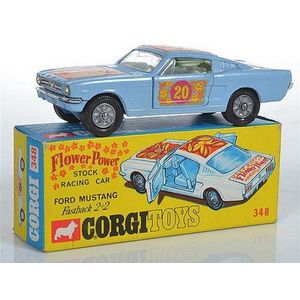Friction Powered Turquoise Ford Fairlane Toy Car
You must be a subscriber, and be logged in to view price and dealer details.
Subscribe Now to view actual auction price for this item
When you subscribe, you have the option of setting the currency in which to display prices to $Au, $US, $NZ or Stg.
- Friction Motors in Toys - A friction motor, also known as a push and go is a type of motor that uses friction to create motion. It is commonly found in toys, particularly in vehicles such as cars and trains. The motor works by using a spring-loaded mechanism that is activated when the toy is pushed or pulled along a flat surface. The movement of the toy causes the friction between the wheels and the surface to turn the gears inside the motor, which then propels the toy forward.
Friction motors are known for their simplicity and low cost, making them a popular choice for children's toys. They are also easy to use, as they do not require any batteries or electrical power to operate.
However, there are some drawbacks to friction motors. They can wear out over time, especially if the toy is used frequently. They also have limited speed and power, and the motion can be affected by the surface on which the toy is used. - Circa - A Latin term meaning 'about', often used in the antique trade to give an approximate date for the piece, usually considered to be five years on either side of the circa year. Thus, circa 1900 means the piece was made about 1900, probably between 1895 and 1905. The expression is sometimes abbreviated to c.1900.
This item has been included into following indexes:
Visually similar items

Tekno Morris Oxford 719, metallic blue, plastic headlights, cast metal hubs, black plastic tyres, white 'Oxford' decals above front wheels, Repairs to box (E-M box F-G)

Corgi boxed 304-A2 Mercedes-Benz 300sL. Hardtop Roadster, yellow and red

Corgi 348 Ford Mustang Fastback 'Pop Art' flower power racing car, pale blue body with red/orange 'Flower Power' labels, RN#20 with Corgi club slip (M box M)

Rare Bandai (Japan) 343 Ford flower delivery wagon friction tinplate, aqua with chrome fender and bumper, rubber tyres, Ford hubs, 'Flowers for Gracious Living' to sides, 'Flowers' to boot, 'Ford lasts Longer' to side doors, yellow interior (E-M box VG-E)
